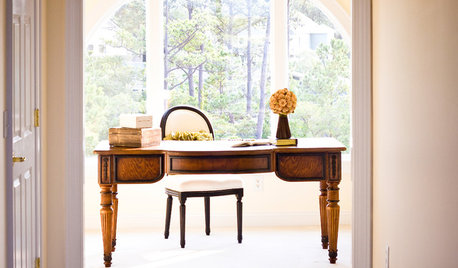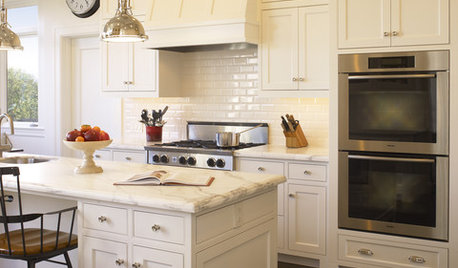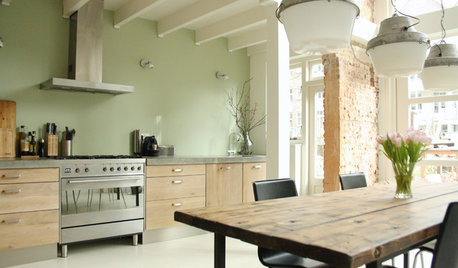4year-ish check in and triage
I don't really have much space left for more roses. I started in 2009 with a compacted dirt lot. SW 18, Z9-10
My soil is still largely clay alkaline though I've improved it a fair amount.
There were a few roses that I had been babying in pots for 2-3 years that I finally planted in the ground this past spring... like Maman Cochet. :( :(
and my new large/healthy Anna Jung tea I thought would be totally fine in the ground and I babied it... and it DIED a few months later. :( I'm still not sure what I did wrong there. I'm still pretty sad about it. My new Evelyn from DA never even sprouted.... My Grandmother's Hat died. :(
Still not super happy with my two Hybrid Perpetuals as I discussed with you guys previously. They're big healthy looking bushes that don't bloom that much. Tempted to dig one of them out and put one of the other roses that has performed better in my yard.
My yellow Lady Banks still hasn't grown in 4 years. I said I would give it another year based on what you guys said, but I've given it a long time. It was planted in 2009 and it hasn't grown at all!!! Seriously tempted to dig out that whole area and amend it. I think maybe when the landscapers put that particular plant in, that area was compacted and the poor thing just can't grow well at all.
I have a probably 2-year in the ground Mme Lombard which is healthy enough looking but hasn't grown at all. Is there anything I can do about that??? :(
These roses have been rock stars for me though:
James Galway DA
Carding Mill DA
Jude the Obscure DA
Archduke Charles China
Bermuda's Kathleen (?)
Valencia HT
Grace Darling HT
La France CL
The Faun FL
Lavender Lassie HM
Lyda Rose HM
Madam Alfred C TN
Sombreuil
Definitely makes me tempted to not even try new ones or be patient with existing underperformers when I could plant another potentially thriving The Faun or Bermuda's Kathleen or Archduke Charles.... Pardon my whining!!
Comments (35)
aimeekitty
Original Author10 years agolast modified: 9 years ago(I mean to say that Maman Cochet and a few others died after I planted them in the ground after babying them for years.)
ingrid_vc so. CA zone 9
10 years agolast modified: 9 years agoAimee, I'd be whining too and be terribly upset, after you had kept them in pots for so long and expected them to flourish in the ground.
If these plants are in the same area and soil as the ones that are thriving then the soil shouldn't be the reason. The question remains whether they were planted when it was already beginning to get warm and whether they had lots of hot afternoon sun. We've discussed here, and I completely agree, that the intensity of the sun is higher now than it was previously even though the temperature is the same. Mulch and amount of watering also are part of the equation. If these factors were all considered then I'm not sure what the problem could be. From now on I will never plant a rose in the ground later than winter because I think they're being stressed more than ever by less rainfall and greater heat.
I'm truly sorry for your rose losses. I know how deeply disappointing that is.
Ingrid
Related Professionals
Ballwin Landscape Architects & Landscape Designers · Eden Prairie Landscape Architects & Landscape Designers · Edmond Landscape Contractors · Brunswick Landscape Contractors · Ellicott City Landscape Contractors · Las Vegas Landscape Contractors · Mission Bend Landscape Contractors · Olympia Landscape Contractors · Rockville Landscape Contractors · Sammamish Landscape Contractors · Sugar Hill Landscape Contractors · Selma Landscape Contractors · Portland Siding & Exteriors · San Bernardino Siding & Exteriors · South Laurel Siding & ExteriorsPoorbutroserich Susan Nashville
10 years agolast modified: 9 years agoYou are a trooper, in my humble opinion! How about researching parentage or sports of those who have succeeded and add them to your garden?
There are lots of great chinas, HMs, noisettes and Austins!
And good for you for growing The Faun. For some reason I believe she is a diva...
Is it possible you could have nematodes? Just a thought since you are in Florida....
Hang in there and don't give up....just adjust and adapt.
Susanaimeekitty
Original Author10 years agolast modified: 9 years agoHey Susan! I'm actually in Southern California not FL!
Thanks Ingrid! I know I'm kinda gardening in a bit extreme circumstances but it is kinda maddening when some roses get huge and happy and others just die so easily despite being a class that is supposed to be fine here...
I'm definitely considering a few more "great chinas" :).
for noisette... I have Aimee Vibert who seems a bit unhappy after being put in the ground (after being potted for a year or two), but maybe she'll perk up next spring. She's not dead yet so that's a plus.
I'd love to have a big beautiful tea, I hope that is possible it seems many other so-callers have great luck with Teas...
I dunno. I'm a beginner rose gardener and I'm relatively new to this soil type (clay alkaline). I would say 4 years is still newbie... so maybe I'm just a HORRIBLE PLANTER. SIGH.
aimeekitty
Original Author10 years agolast modified: 9 years agoPS, I got my The Faun (Bossa Nova, etc.) from Roses Unlimited. It right away became a big healthy ever blooming bush. I adore it.
I tried Borderer and it's still a stick with 5 leaves... so perhaps another The Faun it is.
ingrid_vc so. CA zone 9
10 years agolast modified: 9 years agoMy The Faun, on the other hand, started out well and was beautiful, and then gradually deteriorated. Since yours is doing so well I can only surmise that it likes clay better than decomposed granite. My soil is alkaline too but water drains off so quickly whereas your soil holds water, which is a real plus in the heat. I can't tell you how many roses didn't make it here, tons of them, so it's not anything you're doing wrong, but rather finding out which roses are happy in your conditions. Even then, a rose that will be fabulous in morning sun and afternoon shade may sulk in morning shade and afternoon sun. My Souvenir de la Malmaison is a perfect example of that. I don't see any reason why tea roses shouldn't like your garden. However, that's not to say that every one of them will in every place in your garden. Have you tried Bourbons like Souvenir de la Malmaison? I should think they would do well for you, especially in a position that's shaded in the afternoon.
Ingrid
jerijen
10 years agolast modified: 9 years agoAimee -- I have killed many SdlM. Unless you're living way inland in CA, I wouldn't do it.
I wish I could give you comfort. Your soil sounds like drech, and I suspect it is your problem. Before spending more $$ on plants, can you do a soil analysis???
Jeri
Kippy
10 years agolast modified: 9 years agoMy poor baby SdlM got a fabulous case of mildew when we had all the fog, which promptly burnt up crispy when the sun arrived in full force... Some sad looking bare canes in spots right now, but new growth too. Hoping I have better luck than Jeri, but expecting I will not.
I would check the soil too. You never know what they might of found to do the backfill on walls etc.
User
10 years agolast modified: 9 years agoI must concur with those suggesting soil analysis since it is almost always a given that roses LOVE clay - they certainly have a torrid time in my sandy, stony rubbish.
Good to hear back from you, Aimee - thought you were buried under a pile of infant paraphernalia -unless I am thinking of someone else - didn't you have (gasp) twins?
aimeekitty
Original Author10 years agolast modified: 9 years agoyup! I do have twins, so I have less patience with mysteriously dying plants. :(
If I got a soil analysis is there anything I can do to fix it other than digging up the whole garden? :(
michaelg
10 years agolast modified: 9 years agoIf you were able to transplant a large rootball of light potting mix into a hole in the heavy clay soil, there would be a boundary that could cause problems with water distribution and root travel in the soil. This would be particularly the case if the potting mix contained a lot of perlite or bark.
The clay would have much stronger capillary attraction and, when dry, would pull water out of the light soil, so irrigation applied to the base of the plant would do less good than you expect. Or when both zones are moist, the fine roots that develop in potting mix would be reluctant to move out into the clay to which they are not adapted.
So when doing such transplants, it may be helpful to remove some of the potting soil and spread roots out into the garden soil. Also when irrigating such plants, be sure the surrounding garden soil gets enough water.
Of course, I don't know whether the soil boundary caused the problems in your case.
User
10 years agolast modified: 9 years agoSo, would it not be better to actually bareroot the roses, planting as little potting soil as possible while simultaneously adding a clay-breaker in granule form to the surrounding soil, digging over a fairly shallow, but wide area?
Poorbutroserich Susan Nashville
10 years agolast modified: 9 years agoAntiques budded on multiflora thrive in my alkaline clay. Aerate your soil. Till it up and get air and some compost and manure in there. Clay holds water well but soil needs to be loose. Before I planted I tilled to a depth of two feet and then tilled in prepared soil the rose society recommends.
If you have young twins I can't even imagine the energy you must need. Mind are 11 and 14. I didn't even have a garden until 2 years ago and just started roses last year.
I agree with soil analysis. Heap on compost and manure and till it in.
I think if you want to grow roses you really got to prepare those beds. Roses grow from the deep soil. I learned the hard way that unless they are in good soil it doesn't really matter what you do for them above ground.
Sorry I thought you were in FLA.
Be patient with yourself and you will do just fine!
Susanmichaelg
10 years agolast modified: 9 years agoCampanula, we had a poster here who was a long-experienced landscape contractor in the Northwest. He advocated bare-rooting any container-grown plant in order to let it root into uniform soil, reducing the foliage as needed. But he wasn't gardening in a desert hellhole like some here do.
aimeekitty
Original Author10 years agolast modified: 9 years agoI think it's likely that it's partially a "bad planting" based on my heavy clay soil, like michael said. "If you were able to transplant a large rootball of light potting mix into a hole in the heavy clay soil, there would be a boundary that could cause problems with water distribution and root travel in the soil. "
I'll take your advice next time I transplant.
I asked the landscapers to till up the soil before they planted when we moved in, but I think they ignored me entirely :( at this point it's difficult to do because there are already so many plants in, but when I do an area over, I do try to dig up a lot of it and amend.
Some of the roses are doing -GREAT- others have not. so.... I dunno.
The girls like to play in this water toy we have or sit on a blanket while I weed, but I don't have too much time as someone without young kids of course.
User
10 years agolast modified: 9 years agoah no, Michael, course not. And hot dry clay sounds like a nightmare. I tend to get rid of crappy potting soil since, although my soil is not brilliant, I would bet dollars to doughnuts it's better than some horrible multi-purpose rubbish that nurseries routinely use.....and, having (once) allowed the hated and dreaded vineweevil larvae into my pot garden at home (from bloody heuchera, no less), I have been even more reticent to leave traces of weird (unknown) stuff and nasty microlife to get a grip.
mad_gallica (z5 Eastern NY)
10 years agolast modified: 9 years agoTilling, with a tiller, is for tomatoes. One of the basic tenets upon which this fine forum is founded is that Roses are NOT tomatoes. A tiller just can't get down deep enough for any perennial plant. In my heavy soil, a tiller that can get down 4" is a humongous monster.
In my mixed beds, I see a big difference between the ones that were dug to 6" and the ones that were dug to 12". There isn't a difference between 12" and 18".
roseseek
10 years agolast modified: 9 years agoThe greatest issue Aimee is fighting is engineered soil, Michael. California seismic stability requirements for new construction require compaction to between 95 and 98 percentile, so what used to be 'soil' is now 'stone'. There is virtually no air space between the soil particles. In many cases, what used to be on the surface, is now mixed with sub soil, then mechanically compacted so no water percolates through it, so no liquefaction during earth shaking. It's the artificial equivalent of building your foundation on bed rock.
In many cases, there is nothing to be done to provide "drainage" other than the standard practice of installing drains throughout the lawns and planters so all irrigation and rain flow through them into the streets. Lawns are installed on a bed of approximately six inches of "top soil", whatever that is supposed to be, as it is also artificially engineered, spread out over the drains and engineered soil. Often, sod in those conditions requires daily watering in hot, brilliantly sunny and windy weather.
In many communities, the only way to get trees established is to mound soil and plant them on top of the mounds. Often, the roots spread out under the sod, lifting side walks and damaging foundations and patios after a few years. Favorite "lawn trees" are magnolia, California Peppers and White Birches, all infamous for "friendly", invasive roots. When I managed a wholesale grower in that area, the SCV Urban Forest Dept. was one of our customers for municipal tree planting. One resident had three street trees planted in four years because they all rotted due to no drainage. The City finally had him come in to select the tree type he wanted in hopes it might last long enough to let them off the hook. I never heard the outcome, but I bet it also rotted.
In my old garden, just a few miles south of Aimeekitty's house, soil core samples revealed there were three ancient landslides below the land being developed. The State required the entire area, including the hills, be excavated to a depth of 60', everything mixed so the "soil" was uniform, then replaced and mechanically compacted to the required density. Now, there is that 60' thick base of engineered soil with 30' - 40' of engineered slopes, topped with multi story condos. I can just IMAGINE the landscaping issues they deal with. There is a photo of the beginnings of excavation below.
I've encountered a number of those issues in those types of communities. Imagine replacing roses which aren't performing well or which have died, where the "soil" is about six inches of muddy potting soil type stuff, over a dense, hard, layer of nearly sandstone. Tap roots don't penetrate it. They hit that layer then take off horizontally wherever they can find release. Water collects in the hollows created by trying to form "planting holes" which never drains. Often, the amended soil sours. It is a real piece of work dealing with those issues, but they're better than houses that slip off foundations and/or shake apart, or those which slide off the hillsides due to slippery, unstable soil. Kim
Here is a link that might be useful: Beginning of excavation, 10/2005
michaelg
10 years agolast modified: 9 years agoThank you Kim, that is very interesting stuff and new to me. So this is the "soil boundary" issue raised to the tenth power. Sounds like the only solution would be deep raised beds.
roseseek
10 years agolast modified: 9 years agoYou're welcome. Yes sir, that's about it. I've had good success with digging as large holes as possible, sometimes mechanically, then back filling with native soil with NO organic material added. None. No matter what size hole you dig, it will eventually fill up with water due to daily irrigation, drainage under the sod from many slopes and other elevation changes and even rain...when it occurs. The native soil can sit under water forever with no souring as it contains nothing organic.
Compact the replaced native soil as well as you can without using extreme measures to reduce settling, then build a raised mound of amended soil over the refilled hole. Building a raised planter with actual sides to it over the hole would be ideal, but usually not in the budget or landscape design. Planting on the top of the mound permits roots somewhere to actually go...for a while, and find a water source. Keeping the amended soil above the soil level reduces the probability of the organic amendments from souring. For really invasive tree roots, you'll still have under sod and planter invasion, but at least it requires a lot longer to rot things out and chances of success improve tremendously. Kim
jerijen
10 years agolast modified: 9 years agoKim -- I wonder if you were in California for the Princess Homes disaster? Because I think that was probably the trigger for the regulations Aimee is dealing with.
They built one of the first major developments out there, and the first time it rained, those houses began sliding down the hillsides. It was, frankly, AWESOME! And we all got to see it -- because that was the years before the Antelope Valley Fwy. was built, so it was all surface streets out there. My paternal uncle was a Soil Compaction Engineer. Companies that did that got lots of work.
Anyhow -- Another part of that awful puzzle is that, in places where they compact soil like that, there's not enough soil. So they always truck in soil from elsewhere. And what they bring in isn't fertile topsoil. It's ugleeeeee.
I think the only way someone COULD garden on that stuff is to work with raised beds.
Jeri
roseseek
10 years agolast modified: 9 years agoThere isn't any "top soil" in most of the inland areas here, Jeri. Not enough water to grow what provides the resources to feed the bacteria to make it and not enough water to sustain the bacteria if there were resources. Then, when it DOES rain, all that is washed off into the ocean or blown away by the winds. Then, our "mow, blow and goers" rake it all up and blow it all away to be "processed" into the green waste program no one makes good use of, for a variety of reasons.
Was the "Princess Homes Disaster" on Via Princessa, the Via Princessa tract in Newhall? If it is, that's where my youngest sister lives. It's still called "Slippery Hills" because there are many lots where they can't build because it's still too unstable. Several homes there have artesian springs bubbling up through their garage slabs. My middle sister lives across Sierra Hwy from there, where the old garden was. The slope facing the garden has water issues galore. Their entry gate washed away due to underground water, requiring many truck loads of gravel and cement to stabilize it. The units between the main entry, the garden and the golf course have patio slabs which slide away from the homes with the movement of the earth due to the water. It seeps from the slope and runs down the fire road perpetually. That's the stuff they reported was so alkaline, it couldn't be cleaned. Nothing grows in it but a pink slime. Over run from the nightly irrigation mixes with it in spots to produce sufficient habitat for mosquitoes in summer. Otherwise, no insects use that pinkish water. All of this is just over the hill from the old Bermite facility which dumped Perchloate into the alluvial fan leading down to the Santa Clara River for decades. That was the projected source of water for the enormous development planned which was put on hold until a clean water source could be identified. Let's see...chemicals dumped into alluvial sandy soil washing down in to the river across the road from the site for decades...but no one can figure out WHERE all those contaminants originated...figures. Kim
kittymoonbeam
10 years agolast modified: 9 years agoRaised beds are really pretty too. I would take the roses having the hardest time and try them in a raised bed or put them into a large pot before discarding them. Potting soil is usually worn out after a year so I usually hose it all off before planting in soil or repotting for the next year.
The faun is a pretty rose. It slowly builds into a nice sized plant or you can cut it low to be a groundcover. I was even thinking of trying to tie one to a stake and train it into a multi trunked tree. Wonderful versatile rose.
jerijen
10 years agolast modified: 9 years agoKIM SAID:
Was the "Princess Homes Disaster" on Via Princessa, the Via Princessa tract in Newhall? If it is, that's where my youngest sister lives. It's still called "Slippery Hills" because there are many lots where they can't build because it's still too unstable. Several homes there have artesian springs bubbling up through their garage slabs.
=========*** Yup. That's the place. In its time, it was a huge disaster. I'd bet money those un-buildable "slippery" lots ONCE had houses on them. HEY! How convenient to have a spring IN your garage!
Nor are things like your Bermite case isolated. There are so many polluted sites. Arsenic and mercury in areas where mining was heavy in the 19th Century. Mercury contamination from the New Idria mine, polluting the sea. Chromium ... yadda yadda.
Where I live, all of the original topsoil washed down onto the Oxnard Plain, millennia ago. Gilda Radner had it right. "It's always something."
Jeri
aimeekitty
Original Author10 years agolast modified: 9 years agoapologies I probably didn't read through everything properly, long day with babies with colds! SIGH!
So basically I should make a stronger effort to spring and fall do a big layer of manure... and as I'm able to build up from what I've got to make the soil on top better... and when I dig holes in the meantime, dig a REALLY BIG HOLE.
I have a raised sidebed in my front yard, all the roses in it, of course, are doing great.
When the development put the front yards in, they added sloping raised beds I think to some degree. Everything in the front sloping area, in general, as long as it gets the right water seems to do pretty well.
The Backyard which got no sloping, etc, and was probably not done well by the different landscaper (not the development one) I don't think was drained or graded as well as it could have been. There is an area of the yard that has never quite drained properly, and there are definitely parts of it that just will probably never tolerate saliva due to drainage, while other areas in the back have thriving ones.
my wisteria doesn't really bloom... (if it doesn't bloom enough this next year I'm pulling them out. Yes I know they're monsters, but at least they haven't DIED.)
AT LEAST THE GUARA IS THRIVING. haha. BLESS GUARA. (If you don't like it, lie to me.)
and miraculously my weeping sakura tree is happy. :)
There's one very happy wall and corner which starts with my snail vine, a big happy La France Cl, Larry Daniels, Sombreuil, Alchemist, William Shakespeare 2000, James Galway and a lot of guara, agapanthus, irises and rosemary. all are happy and large and starting to grow into each other. If I could just get the REST of my yard to look like that...!
The center of the backyard is particularly barren looking to me. Maybe that's the area I should try to dig up some and build on top of since a lot of the stuff there isn't that happy. Maybe I could dig around the roses which ARE happy there? I don't know.
roseseek
10 years agolast modified: 9 years agoThey did. The neighborhood "park", across the cul de sac from my sister's house stands empty because it is not buildable. The home which WAS there, suddenly had the home on the ridge above and behind it, IN it. Several homeowners have tried buying it to add to their lots to increase their yard sizes, but the owner, who has owned it since the mid sixties, wants a fortune for it. The house next door to it, down hill, has a vertical back yard which is built upon enormous concrete pylons and framework holding the upper ridge where it is. A bit higher uphill are a few lots which have mobile homes on them, a "no no" for the area, but they're the only type of building the city will allow due to weight.
We have a few lots like that here in the Encino Hills, too. Ironically, suddenly the "unbuildable" ones become buildable as soon as the prices for unbuilt lots climbs far enough. The same thing happened in the Palisades years ago, above the nursery. A very large parcel of land was deemed unsuited for building due to very high ground water and fractured bed rock. The HOA hired independent geologists who concurred with the city and state it could never be built on....until fifty years later when someone got permits to build a Ramada Inn type mansion on it, blocking everyone's views. Kim
User
10 years agolast modified: 9 years agoMy 'soil' is essentially builder's rubble which is why my entire home garden is basically raised beds with imported topsoil. I remember the shock when we tried to dig into the top layer of compacted mud. Everyone, in my housing area, either has a pathetic bit of grass.....or pots and raised beds. It seemed a drastic solution but the only viable way to grow anything at all......and it means that you swap one problem for another (the endless watering........but we do have a garden, at least.
Poorbutroserich Susan Nashville
10 years agolast modified: 9 years agoAimee, is the soil amended in that raised bed?....If you raise the bed then you can have the soil you want.
Mad, I rented a tiller from Home Depot and it was a monster. And with the amendments it made an amazing bed for my roses. I HATE tomatoes (sorry...but I like tomato sauce). I (well, my df) was able to get down almost to his knees in the bed. Then we filled it with a blend of top soil and amendments. It was fluffy.
I honestly believe this has made a huge difference in the quality of growth and bloom.
Of course, this is anecdotal but if crap falls from the sky I'm the kind of person who assumes it came from a bird. LOL!
Susanmichaelg
10 years agolast modified: 9 years agoI am curious as to how much rain it takes to saturate the dry subsoil and start the houses sliding down the hills. And how often that condition happens.
Kippy
10 years agolast modified: 9 years agoMichael, I think that varies a bit by location
Houses on the ocean front bluffs slide often because of a leaking sprinkler line somewhere on a property nearby. You can see that most of the bluffs historically had small slides. I had a friend who used to joke that every year their home was closer to being ocean front property (they bought the lot on the other side of the road) Those will often slide weeks or months after hard rains
Then there are the hillside homes. Remember that forest fires are common and part of the chaparrel life cycle is burns that release oils that coat the soil and can make it hydrophobic. If you did not have the slope tested and engineered, you likely have a fairly shallow layer that will slide off in heavy rains. Note that mudslides are huge issues the winter rainy period after forest fires.
Some builders will take short cuts or hire the lowest bid not the best qualified when working on compacting a pad for a home. From what I understand (my guy was a slide home pro-with no slide claims on his work) the soils engineer wants to import fill that is the same as the native soil. If it is unavailable, they will bring in import that is similar but it has to be well blended before it is compacted.
BUT, some one like my guy builds the pad, that does not mean he is the last one to touch the soil around the home. Walls go in, utilities go in, driveways etc. All of that displaces the compacted soil and depending on who was hired, they will "loose" the extra around the lot. If they lost too much of it in the back yard, the imported layer of top soil might be very very thin. Remember that most people want lawn, a few palms, some agapanthus and an Iceberg or two, something the mow and blow guys can service in a few minutes. So that thin layer of topsoil is enough for the sod to start and get green to sell the home. Little thought to how it might be to garden in the area.
aimeekitty
Original Author10 years agolast modified: 9 years agoThere's not any "sliding home" danger in me digging up the yard a little in the back and raising the soil up some though, right? D: (eep!) I feel like my particular house, though on some hills seems unlikely of sliding, we aren't really on a bluff or a cliff. Perhaps neighbors across the street with the nice view I might be a bit more nervous about? It seems like they've planted a lot of nice HOA maintained ground cover and mud-slide control plants on the hillsides, too.
I feel like my front yard with little raised hills on it tends to work better than my flat backyard, so I'm wondering if I should just mimic what they did in the front yard, in the back, Ie, try to make some raised hills. (very small hills. haha.) The idea being to dig up the ground as my feeble self is able haha... and then mix in more soil and amendments and make some areas higher. If I did the whole middle back yard... I might have to move about 5 roses. Which makes me extremely nervous since I've had so many transplant deaths. But it might be better??
aimeekitty
Original Author10 years agolast modified: 9 years agoSo, should I try digging up the middle back, raising it up and replanting those roses (risking their death?).





















aimeekittyOriginal Author